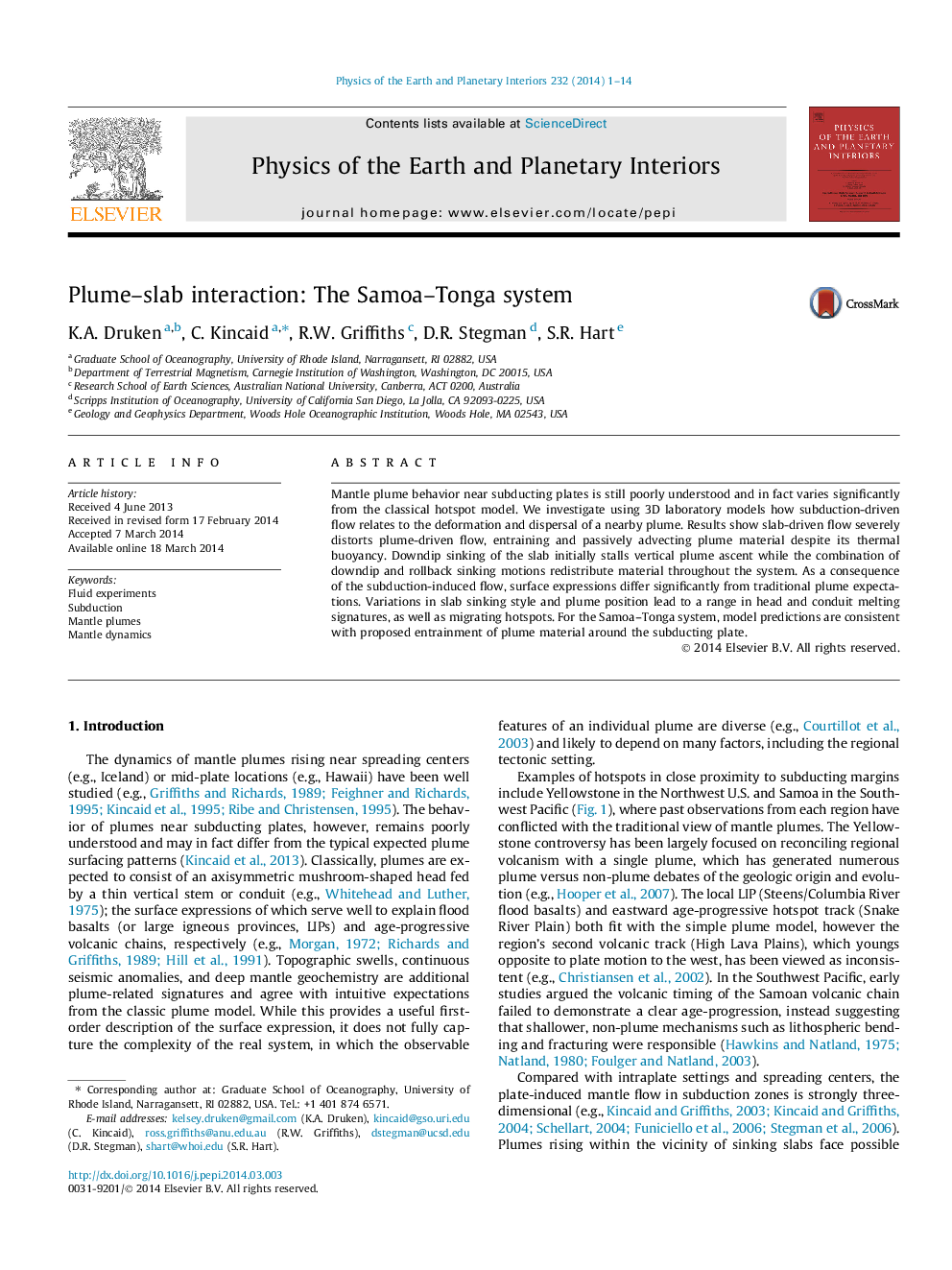| Article ID | Journal | Published Year | Pages | File Type |
|---|---|---|---|---|
| 4741676 | Physics of the Earth and Planetary Interiors | 2014 | 14 Pages |
•The interaction between subducting plates and upwelling mantle plumes is examined.•Slab-driven flow is shown to severely deform and entrain plume-driven flow.•Traditional plume surfacing patterns do not necessarily hold near subduction zones.•Model predictions of plume–slab interaction consistent with Samoa–Tonga setting.
Mantle plume behavior near subducting plates is still poorly understood and in fact varies significantly from the classical hotspot model. We investigate using 3D laboratory models how subduction-driven flow relates to the deformation and dispersal of a nearby plume. Results show slab-driven flow severely distorts plume-driven flow, entraining and passively advecting plume material despite its thermal buoyancy. Downdip sinking of the slab initially stalls vertical plume ascent while the combination of downdip and rollback sinking motions redistribute material throughout the system. As a consequence of the subduction-induced flow, surface expressions differ significantly from traditional plume expectations. Variations in slab sinking style and plume position lead to a range in head and conduit melting signatures, as well as migrating hotspots. For the Samoa–Tonga system, model predictions are consistent with proposed entrainment of plume material around the subducting plate.
